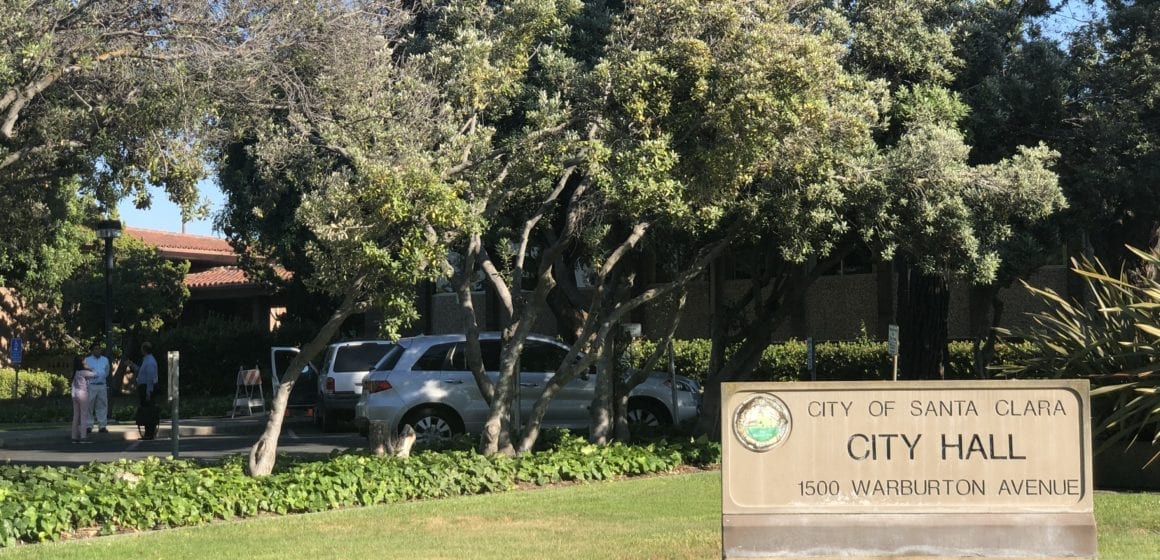Welcome to SV@Home’s Policy Rundown, your need-to-know overview of important housing policy actions and developments from the past two weeks.
Palo Alto City Council Delays Action on North Ventura
On Monday, the Palo Alto City Council decided to delay action on the North Ventura Coordinated Area Plan until the Fall. After over two years of community engagement, staff work, and city meetings, councilmembers expressed various concerns about the Plan, contesting expert analysis and recommendations while asking staff to return with more details in the future.
The staff-recommended alternative, known as Alternative 3B, proposes creating space for up to 2,130 new homes in North Ventura, alongside new commercial space, bike-ped improvements, restored park space, and deed-restricted affordable housing. SV@Home and community housing advocates supported Alternative 3B, which was the only alternative that city consultants deemed financially feasible (proposals with lower density residential development were assessed to be unlikely to result in any meaningful redevelopment or change in the area). With North Ventura located steps away from the Caltrain Station and the Cal Ave downtown strip, housing advocates have long seen this as a perfect opportunity for Palo Alto to meet its housing needs.
While we are disappointed that the Council did not take any action, we hope that they will return to support a housing-rich vision for North Ventura when they again consider the plan in the Fall. SV@Home and housing advocates have long pushed for even more housing in Ventura– at least 3,000 new homes. Without increased density, heights, and other incentives it will be difficult for residential development to move forward in the area. Unfortunately, if residential and other redevelopment is unable to take place there will be no resources available to support deed-restricted affordable housing, new parks, or other community benefits. Vague pronouncements of support for affordable housing, without concomitant policy action to create the opportunities and resources for said affordable housing to be developed, ring hollow.
Any continued delayed action risks missing an important opportunity for Palo Alto to plan for the housing needed to create a compliant Housing Element in the upcoming 2023 – 2031 cycle. Additionally, delayed or insignificant action will only result in existing landowners deciding to either not redevelop their properties or to redevelop under existing zoning regulations, which undermines the overall vision and purpose of the coordinated area plan process.

San José Affordable Housing Siting Policy at Council next week
Next Tuesday, June 22nd at 11:00am, the San José City Council will review the Housing Department’s proposal to update the City’s Affordable Housing Siting Policy. The proposed policy will provide a framework for assessing which affordable housing developments will be prioritized for Housing Department funding. The policy responds to two related concerns raised by the City Council: where affordable developments are more likely to be built in parts of the city and not others if left to the market; and, the broader goal of Affirmatively Furthering Fair Housing by proactively prioritizing affordable housing opportunities in wealthier, highly-resourced areas where they few exist.
The proposal creates a three category system for San José: Opportunity Areas, which are generally higher-income census tracts and align with state priority opportunity maps; City Planned Areas, which cover targeted growth areas that are not high in poverty; and Other Areas of the City, which include mostly very low-income neighborhoods. The plan broadly aims to increase the amount of affordable housing resources to the Opportunity Areas over time. Action next week will open the door for a number of shovel-ready affordable housing developments to move forward with city funding.
Although the proposed policy is broadly supported as a step towards more integrative opportunities, there are some potentially significant challenges that will need be worked through during implementation, including alignment with state financing priority maps, and assessment of development opportunity sites in Opportunity Areas. SV@Home believes the upcoming Assessment of Fair Housing implementation policy recommendations due back to the Council later in the year, and the City’s Housing Element Update process over the next 12 to 18 months, will provide real opportunities to engage with the Siting Policy and ensure the tools are in place to realize the vision going forward.

Santa Clara City Council Rejects Housing-Rich ECR Plan, Goes Back to Drawing Board
After more than three-years of planning, including extensive public outreach, a number of City Council study sessions, and multiple rounds of input from a specially convened Community Advisory Council (SV@Home was a member of this advisory group), the El Camino Real Specific Plan came before the Santa Clara City Council on Tuesday for final adoption. Instead of moving forward with the housing-rich alternative, the council voted unanimously to reject the plan as presented and requested that staff prepare major modifications to lower residential densities and building heights by roughly half of that proposed, with a maximum height of four stories and significant stretches with a limit of two stories.
The vision of the draft El Camino Real Specific Plan in the City of Santa Clara was to transform the area from a series of single story, automobile-oriented strip malls to a tree lined, transit oriented, and multi-modal corridor with a mix of residential and retail uses. Higher intensity commercial and residential development would have been concentrated at key intersections to sustain the commercial uses, and pedestrian, bicycle, and transit amenities were prioritized in the plan area. The Plan area consists of all the properties facing the 3.2-mile stretch of the boulevard between the western City boundary in the vicinity of the Lawrence Expressway and Lafayette Street to the east.
The Plan rejected by the council would have added an estimated 6,200 additional homes to the area over the next 20-25 years, with a goal of at least 20% of the total being affordable to lower and moderate income households. This affordable housing goal would have been achieved through a combination of traditional stand-alone affordable housing developments, and an onsite 15% inclusionary requirement at 80% Average Median Income (AMI), which provides deeper affordability than the City’s current requirement of 15% inclusionary at 100% AMI.
Unfortunately, the driving factor for the council decision to reject the plan as presented was the same as has been seen continuously in peninsula cities such as Palo Alto and Cupertino – homeowners from adjacent properties and residents of the surrounding neighborhoods arguing that the proposed mid-rise zoning standards were more appropriate in other parts of the city, but did not fit into Santa Clara’s El Camino Real corridor. The ECR is Santa Clara’s major commercial, and more recently residential, thoroughfare. It is the most transit-rich corridor in the city, serviced by both local and express high frequency busses with direct connection to the Caltrain and future end-of-the-line BART station. It has been a designated planned development area for a long time, and was expected to be a critical piece of the puzzle as the city prepares its Housing Element Update because it runs through relatively high resourced areas. Somewhat ironically, the ECR plan had significantly increased the stringency of current design standards to address the transition to adjacent single family homes.
Recent feasibility studies for residential construction in Santa Clara have shown that lower density townhomes are highly profitable to developers, while apartments or condominiums would have to be built at the moderate densities initially proposed to be economically feasible. A motion to study the feasibility of residential development at the lower densities recommended by the council was not accepted.
As City Staff modify the plan in response to City Council’s motion, SV@Home will continue to advocate for a vibrant mixed use, multi-modal, and transit-oriented community with more affordable housing.

